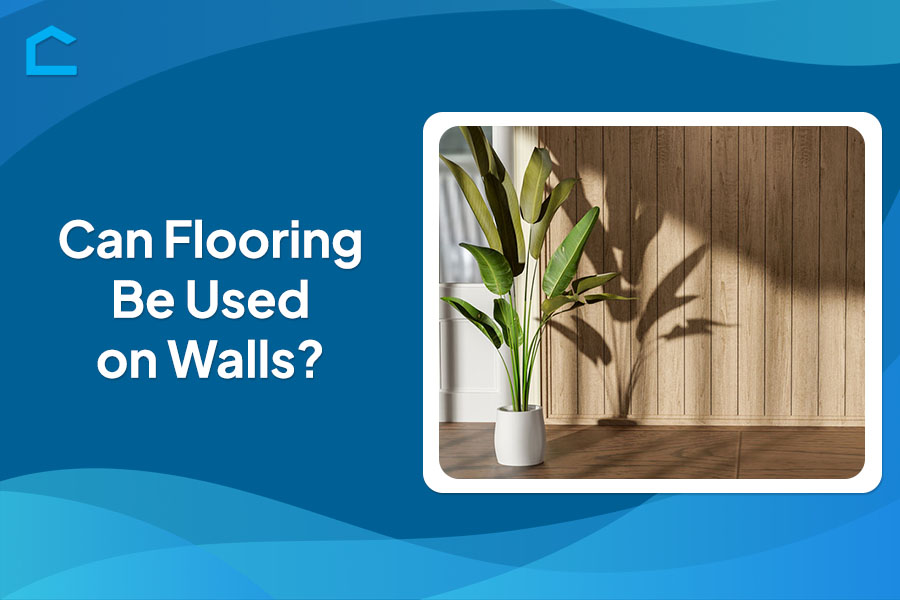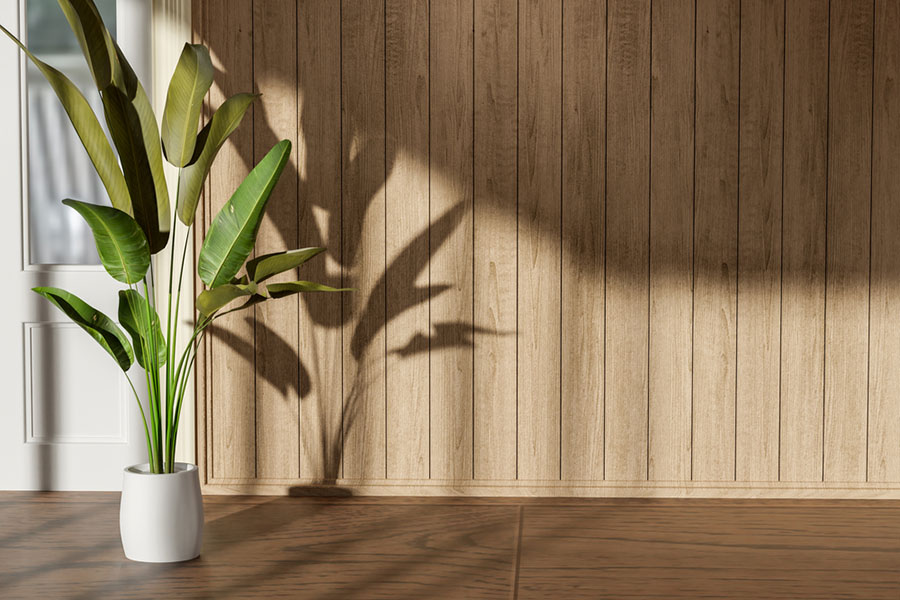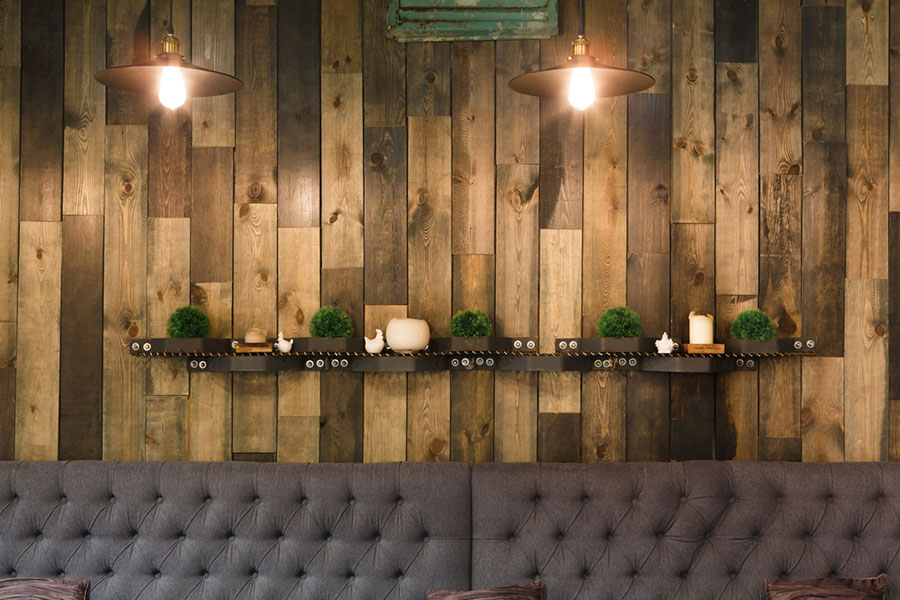Can Flooring Be Used on Walls?

When it comes to designing interiors, the boundaries of creativity are often pushed to achieve unique and striking aesthetics. One such trend that has gained traction in recent years is the use of flooring materials. But can flooring be used on walls?
In this article, we’ll explore the creative possibilities and practical considerations of using flooring materials as wall coverings. From adding texture and depth to creating unique focal points, let’s delve into the world of vertical design with flooring.
Can Flooring Be Used on Walls?
Yes, flooring can be used on walls. This might sound surprising, but it’s true! Many types of flooring materials, like wood, tile, and vinyl, can also work well as wall coverings.
Using flooring on walls can add a unique and stylish touch to a room, creating a cohesive look throughout the space. Just make sure the walls are clean, dry, and properly prepared before installation. Also, you should choose the right adhesive or installation method for the specific type of flooring you’re using.

Source: shutterstock.com / Photo Contributor: bluefish_ds
Advantages of Using Flooring on Walls
Using flooring materials on walls can create captivating patterns and textures. These surfaces, typically known for their durability, can enhance a room’s ambiance. For instance, wood brings a cozy feel, while stone adds a grounded, natural touch.
Hardwood, in particular, exudes timeless charm and can maintain its beauty for many years. Meanwhile, materials like natural slate or porcelain tiles introduce rustic elements that resist wear and tear.
Installing these materials properly is crucial for both aesthetics and durability. This involves assessing weight limits, addressing wall irregularities, and applying appropriate primers according to manufacturer instructions.
Seamlessly grouting the tiles and finishing edges with caulk or quarter-round molding can further enhance the overall appearance. By carefully planning the use of flooring materials on walls, you can create inviting spaces rich in texture and warmth, seamlessly blending form and function.
Cost savings
Utilizing flooring materials as unique wall coverings provides significant cost savings. You can source surplus or discounted inventory from previous projects or home improvement stores. This will allow you to score high-quality materials at a fraction of the upfront cost.
While wood, laminate, tile, and stone involve a higher one-time installation cost, they last 15-20+ years with basic maintenance, retaining their original beauty affordably in the long run. This upfront investment pays off exponentially over time as you avoid recurring replacement expenses like repainting or re-wallpapering.
Types of Flooring Suitable for Wall Installation
Classic wood looks
Several durable flooring materials can effectively transform walls into stunning design features. Hardwood planks, for instance, radiate timeless charm and coziness. Their individual knots and grains impart character, making them perfect for accent walls.
Laminate, on the other hand, provides remarkable versatility by mimicking the appearance of wood and stone. It comes in various styles, ranging from rustic to contemporary. This option is cost-effective and resilient, making it ideal for family-friendly spaces, particularly in areas prone to moisture, such as kitchens and bathrooms.
Waterproof durability
Vinyl is an excellent choice for bathrooms because it’s completely waterproof and resistant to scratches. It can mimic the look of wood, tile, or stone in various patterns.
Engineered wood is also great, especially for places with changing humidity levels. Its plywood base prevents it from expanding or contracting too much while still giving you that beautiful wood appearance.
Inspired textures
Whether hardwood, laminate, vinyl, or engineered wood, these materials create inspired spaces with unparalleled texture. They allow you to find some flooring on walls ideas that reflect your style while withstanding vertical applications.
Installation Tips
Achieving professional, lasting results with flooring on walls requires proper installation. So, we provided some tips for you to consider:
Thoroughly prepare the wall surface
- Must be fully clean, dry, level, and smooth
- Repair any imperfections
- Apply moisture barriers in bathrooms or kitchens
Select the correct adhesive
- Use formula designed for your specific flooring material and wall substrate
- Consider room temperature/humidity conditions
- Look for user-friendly, low-VOC options
Plan the layout
- Determine aesthetically-pleasing orientation; horizontal for spaciousness, vertical for height, and diagonal for movement
- Map out symmetrical, balanced plank patterns highlighting focal points
- Use intentional asymmetry for visual interest
- Decide if featuring an accent wall or immersing entire rooms
So, prepare the surface meticulously to ensure compatibility between the adhesive and the materials or environment. Then, with a carefully planned layout, you can effortlessly enhance the interior style with a carefully planned layout.

Source: shutterstock.com / Photo Contributor: Prostock-studio
Conclusion
The exploration of using flooring materials on walls presents a fascinating avenue for interior design innovation. So, can flooring be used on walls? Despite initial surprise, it’s evident that flooring can indeed be successfully utilized on walls, offering a plethora of creative opportunities while also being a practical and sustainable choice.
By embracing this unconventional approach, you can transcend traditional design boundaries, crafting personalized interiors that reflect their unique style preferences. From hardwood’s timeless charm to vinyl’s waterproof durability, various flooring materials bring distinct qualities to vertical applications, enhancing the ambiance of living spaces.
Now, why not dare to explore this unconventional yet impactful design approach and transform your living spaces into expressions of creativity and individuality? Let your imagination soar!
